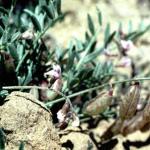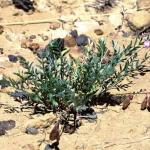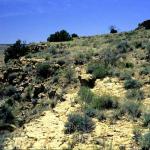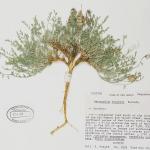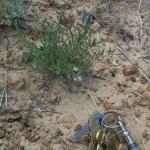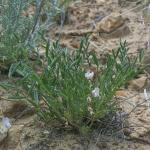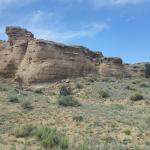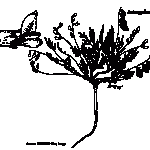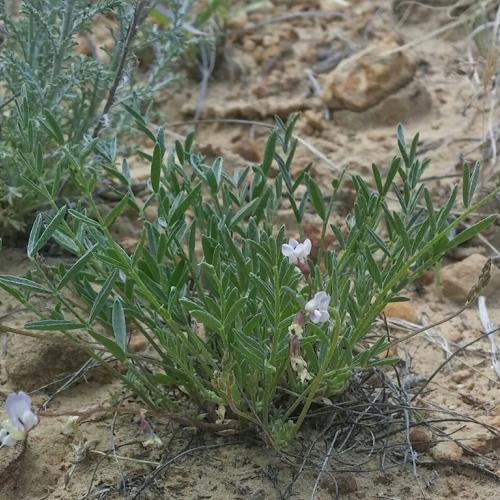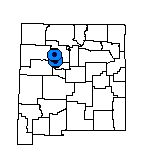Astragalus knightii (Knight Milkvetch)
NONE
| USFWS | State of NM | USFS | BLM | Navajo Nation | State Rank | Global Rank | R-E-D Code | NMRPTC Status | Strategy Status |
|---|---|---|---|---|---|---|---|---|---|
| SEN | S2 | G2 | 2-1-3 | R | SS |
| Overall Conservation Status | Documented Threats | Actions Needed |
|---|---|---|
| UNDER CONSERVED | Road maintenance and development |
Status surveys on abundance, distribution and threats. Seed banking |
Tufted perennial herb; stems numerous, ascending, 1-5 cm long, arising from a taproot; herbage gray-strigose with dolabriform hairs; stipules of the lower nodes connate; leaves pinnately compound, 2.5-8.5 cm long; stalks long, wiry, and sometimes persistent on the caudex; leaflets 9-15, narrowly elliptic or ovate-elliptic, 2-8 mm long; calyx 3-4 mm long, bell-shaped; petals whitish, lilac-tinged along the margins, lower petal purple tipped, banner bent upward 45 degrees, 5-6 mm long; pods pendulous, narrowly obovoid-ellipsoid, turgid or almost bladdery, 8-14 mm long, 4-6 mm wide, red spotted. Flowers May to early June.
Astragalus ceramicus can be distinguished from A. knightii by the presence of thread-like rhizomes and the absence of a taproot.
New Mexico, Sandoval County, middle Rio Puerco Valley.
Rimrock ledges of Dakota Formation sandstone in juniper savannah and grassland; 1,750-1,800 m (5,700-5,900 ft).
Presently known only from the Mesa Prieta area of the middle Rio Puerco drainage. The specific epithet honors Paul Knight who discovered this species while working as a botanist for the State of New Mexico.
Some populations are small and could be seriously impacted by road development, pipelines and mining activities.
*New Mexico Native Plants Protection Advisory Committee. 1984. A handbook of rare and endemic plants of New Mexico. University of New Mexico Press, Albuquerque.
Barneby, R.C. 1983. A new Astragalus from sandstone rimrock in New Mexico. Brittonia 35:109-110.
Isely, D. 1998. Native and naturalized Leguminosae (Fabaceae) of the United States. Monte L. Beane Life Science Museum, Brigham Young University, Provo, Utah.
For distribution maps and more information, visit Natural Heritage New Mexico

